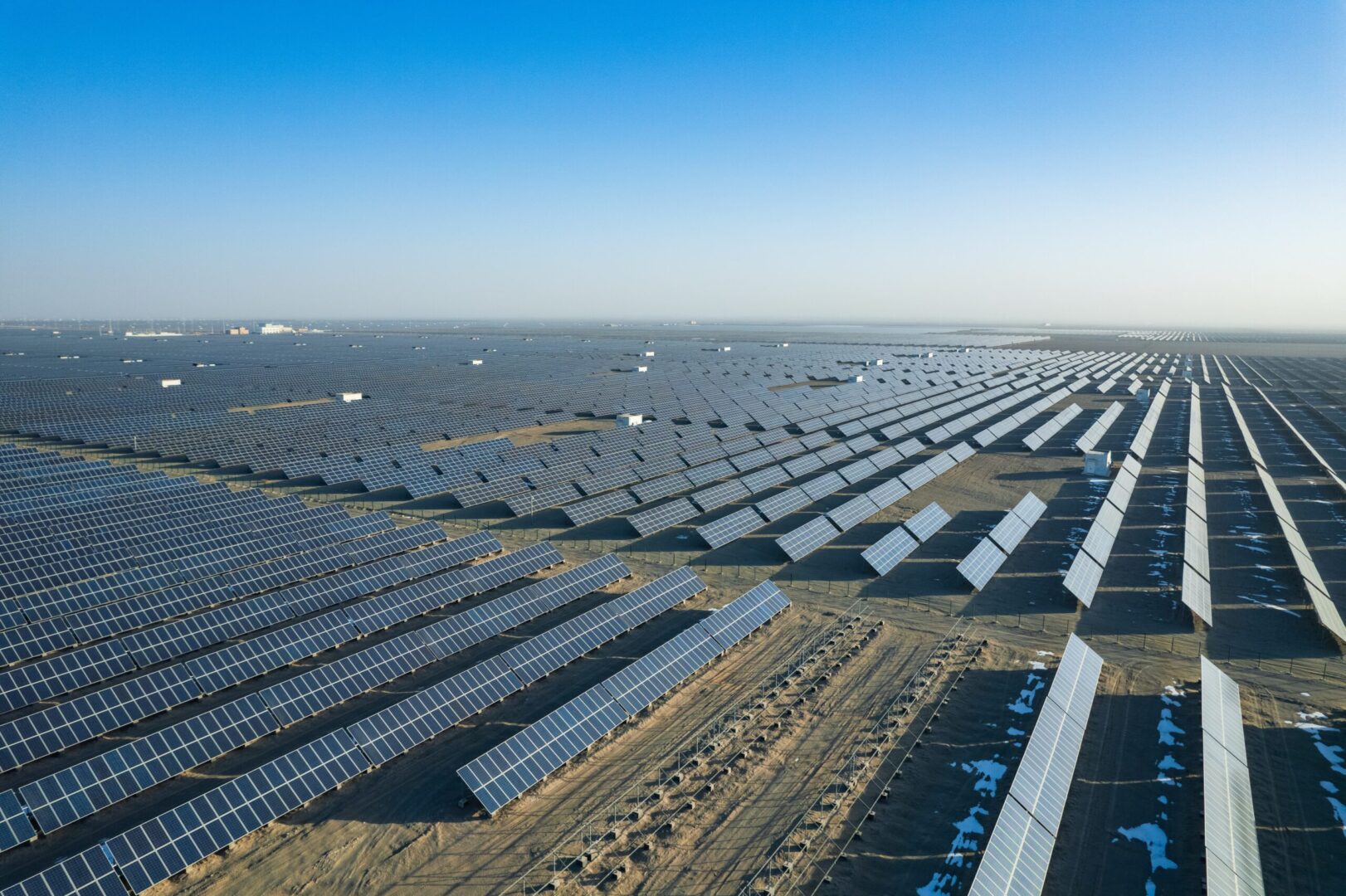China’s Green Energy Surge
China is on track to smash its renewable energy targets, five years ahead of schedule.
China’s actions are pivotal to humanity’s chances of mitigating climate change. The World Bank reported in 2022 that China is responsible for a third of global greenhouse gas emissions, which means that the gigantic nation’s transition to renewable energy is crucial. Now, according to a new report by Global Energy Monitor, it seems like this transition is steaming forwards.
In 2020, China announced that it would install over 1,200 GW of solar and wind energy by 2030. The report says it’s now looking like it will meet that target by 2025. This has real global significance: by the end of 2025, China’s renewable energy capacity is set to double, which would increase the world’s large-scale solar installations by 85% and wind turbine fleets by 50%. Even currently, the country’s 228 GW large-scale solar capacity outstrips that of the rest of the world combined.

A solar power plant in Dunhuang, in China’s Gobi Desert
Coal and energy storage
However, it’s important to note that China is still the world’s biggest coal consumer, and coal continues to dominate in terms of contributions to the nation’s power supply. China’s annual emissions are also still rising. In fact, it is still building hundreds of new coal-fired power plants, in part to act as back-up energy sources for new solar and wind farms. Doubts remain as to whether these plants will purely support renewables, or whether they will in fact continue to supply a large proportion of the country’s energy needs.
This production of coal plants is in part due to the persistent issues with renewables’ reliability. Neither sun nor wind are constant or fully predictable, which means that renewable energy infrastructure needs ways to store energy at peak times for later use, or otherwise risk not being able to meet energy demands. China is fast becoming a world leader in the development and rollout of power storage systems. These are wide-ranging, including new types of batteries, compressed air, hydrogen storage, and twinning with hydroelectric dams.
Motivations
There are plenty of reasons why investing in renewables is a smart move for China. For a start, the nation’s industrialisation has been accompanied by rapidly growing energy needs, but severe issues around pollution have emerged when these needs are met through fossil fuels. China’s infrastructure and citizens are also being increasingly exposed to the risks of climate change: for instance, many of its most densely populated and economically important cities are at risk of coastal flooding.
Finally, there are clear economic benefits to capturing a market. These days, China is the world’s leading supplier of solar panels, which as well as bringing in income for the country, also makes it cheaper to use such products domestically, as they are subject to fewer supply chain costs. China’s vast size, wealth, and population means that it is able to make globally important changes, to markets, to diplomacy, and to our prospects of tackling climate change – and this report brings hope that these changes are broadly in the right direction.
About the Author: Jacob Ashton
POPULAR
COMMENTS
- Robert Schreib on Electricity generation prices may increase by as much as 50% if only based on coal and gas
- Robert Schreib on China made a historic commitment to reduce its emissions of greenhouse gases
- Lee Nikki on COP30: Climate Summit 2025 – Intro Climate Action Event
- Hollie Bailey on Leaders doubled down on fossil fuels after promising to reduce climate pollution
- Malcolm R Forster on Mythbusters tests global warming theory – does CO2 warm air?